PowerPoint 2007 tutorial on using other layout elements
How to use other layout elements in PowerPoint 2007
In PowerPoint 2007, you can take advantage of slide layout elements to better design your presentation. For example, you can use headers and footers to display necessary information in your slides. Additionally, grid lines and rulers are available to help you position objects. These features can give your presentations more professionalism and clarity.
1. Set header and footer
When making slides, users can use the header and footer functions provided by PowerPoint to add some fixed information to each slide. For example, you can add page number, time, company name, etc. to the footer of the slide. By taking advantage of these features, users can easily maintain consistency on every slide and be able to quickly update this information without having to manually modify each slide. In this way, users can save time and energy and make slideshow production more efficient and professional.

2. Use grid lines and guide lines
After adding multiple objects to the slide, you can move and adjust the relative size and position of the multiple objects through the displayed grid lines. Display the "View" tab in the ribbon and select the "Gridlines" checkbox in the "Show/Hide" group. The slide effect is as shown in Figure 6-28.
3. Use the ruler
When the user selects the "Ruler" checkbox in the "Show/Hide" group of the "View" tab, a ruler as shown in Figure 6-31 will appear on the slide. As can be seen from the picture, the rulers in the slide are divided into two types: horizontal rulers and vertical rulers. Rulers allow users to place text or picture objects on a slide conveniently and accurately. They can also move and align these objects, as well as adjust indents and tabs in text.
How to use powerpoint2007
1. Tool: Microsoft Power Point2007
2. Operation steps
1. Understand the basic interface of Power Point2007. Microsoft Office software is famous for its powerful functions, which sometimes makes it troublesome to find a less commonly used function. Therefore, it is very important to first understand the interface ribbon of Power Point2007.

2. Create PPT document. Click "File" - "New" in the ribbon, select the appropriate template, and then click Create to create a PPT document.
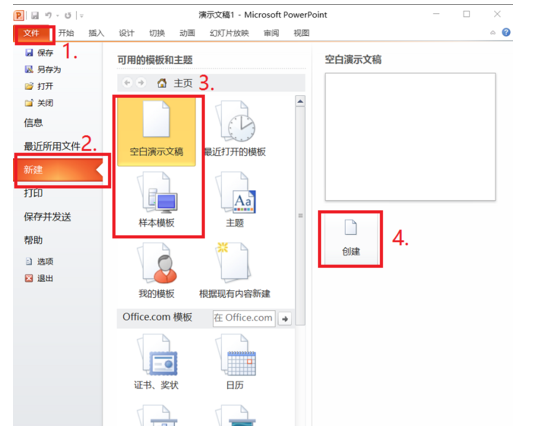
3. Edit PPT manuscript. Right-click on the "Outline Pane" to create/delete/copy slides, and then enter text, insert pictures, tables and other data into the newly created slides.
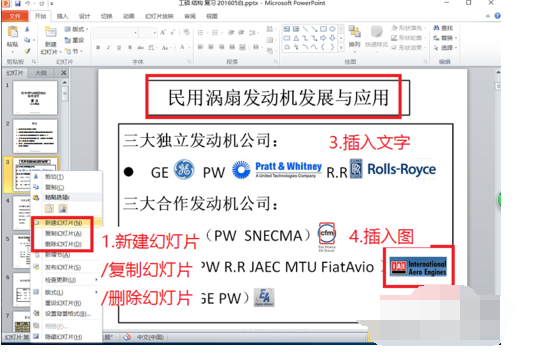
4. Set up the PPT slide page and set the format and layout of text and pictures. After clicking the mouse to select text, you can set the font and paragraph information in the ribbon, or set basic information in the pop-up small window. You can either click the picture button in the ribbon and select the picture from the pop-up box to insert it, or you can click the picture file to copy it, and then right-click to paste it in the PPT.
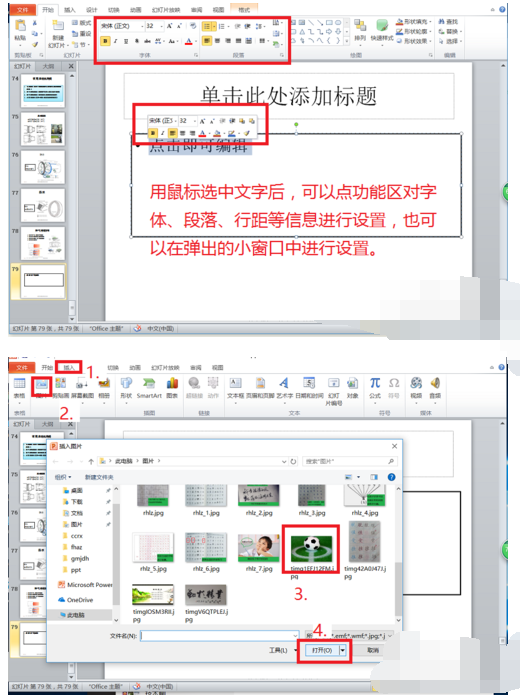

5. After editing the text and picture information, save it and set the playback method. Click "Slideshow" in the ribbon to set the playback method and start playback in the function panel below. Click the mouse or the space bar to switch slides, and press the Esc key in the upper left corner of the keyboard to exit playback.
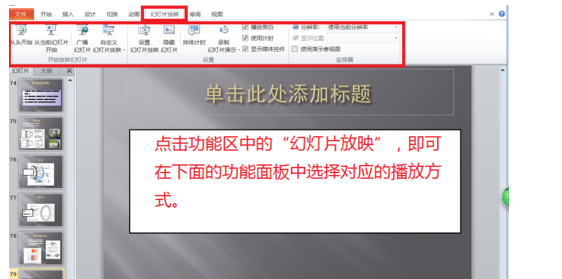
6. Beautify PPT. Microsoft provides PPT with basic functions such as word art, ready-made design solutions, and switching effects. The edited PPT can be set directly in the ribbon.
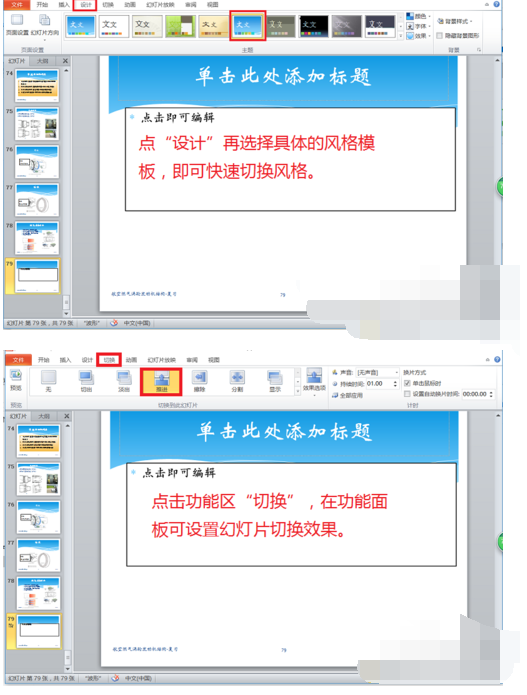
7. Test the effect. If you want to use it for display in a projector, you must test it first to see if the font size and color are appropriate, to see if the picture is clear enough, to see how the switching effect is, and to see if the playback method is normal.

The above is the detailed content of PowerPoint 2007 tutorial on using other layout elements. For more information, please follow other related articles on the PHP Chinese website!

Hot AI Tools

Undresser.AI Undress
AI-powered app for creating realistic nude photos

AI Clothes Remover
Online AI tool for removing clothes from photos.

Undress AI Tool
Undress images for free

Clothoff.io
AI clothes remover

AI Hentai Generator
Generate AI Hentai for free.

Hot Article

Hot Tools

Notepad++7.3.1
Easy-to-use and free code editor

SublimeText3 Chinese version
Chinese version, very easy to use

Zend Studio 13.0.1
Powerful PHP integrated development environment

Dreamweaver CS6
Visual web development tools

SublimeText3 Mac version
God-level code editing software (SublimeText3)

Hot Topics
 1378
1378
 52
52
 5 Things You Can Do in Excel for the Web Today That You Couldn't 12 Months Ago
Mar 22, 2025 am 03:03 AM
5 Things You Can Do in Excel for the Web Today That You Couldn't 12 Months Ago
Mar 22, 2025 am 03:03 AM
Excel web version features enhancements to improve efficiency! While Excel desktop version is more powerful, the web version has also been significantly improved over the past year. This article will focus on five key improvements: Easily insert rows and columns: In Excel web, just hover over the row or column header and click the " " sign that appears to insert a new row or column. There is no need to use the confusing right-click menu "insert" function anymore. This method is faster, and newly inserted rows or columns inherit the format of adjacent cells. Export as CSV files: Excel now supports exporting worksheets as CSV files for easy data transfer and compatibility with other software. Click "File" > "Export"
 How to Use LAMBDA in Excel to Create Your Own Functions
Mar 21, 2025 am 03:08 AM
How to Use LAMBDA in Excel to Create Your Own Functions
Mar 21, 2025 am 03:08 AM
Excel's LAMBDA Functions: An easy guide to creating custom functions Before Excel introduced the LAMBDA function, creating a custom function requires VBA or macro. Now, with LAMBDA, you can easily implement it using the familiar Excel syntax. This guide will guide you step by step how to use the LAMBDA function. It is recommended that you read the parts of this guide in order, first understand the grammar and simple examples, and then learn practical applications. The LAMBDA function is available for Microsoft 365 (Windows and Mac), Excel 2024 (Windows and Mac), and Excel for the web. E
 If You Don't Use Excel's Hidden Camera Tool, You're Missing a Trick
Mar 25, 2025 am 02:48 AM
If You Don't Use Excel's Hidden Camera Tool, You're Missing a Trick
Mar 25, 2025 am 02:48 AM
Quick Links Why Use the Camera Tool?
 How to Create a Timeline Filter in Excel
Apr 03, 2025 am 03:51 AM
How to Create a Timeline Filter in Excel
Apr 03, 2025 am 03:51 AM
In Excel, using the timeline filter can display data by time period more efficiently, which is more convenient than using the filter button. The Timeline is a dynamic filtering option that allows you to quickly display data for a single date, month, quarter, or year. Step 1: Convert data to pivot table First, convert the original Excel data into a pivot table. Select any cell in the data table (formatted or not) and click PivotTable on the Insert tab of the ribbon. Related: How to Create Pivot Tables in Microsoft Excel Don't be intimidated by the pivot table! We will teach you basic skills that you can master in minutes. Related Articles In the dialog box, make sure the entire data range is selected (
 Use the PERCENTOF Function to Simplify Percentage Calculations in Excel
Mar 27, 2025 am 03:03 AM
Use the PERCENTOF Function to Simplify Percentage Calculations in Excel
Mar 27, 2025 am 03:03 AM
Excel's PERCENTOF function: Easily calculate the proportion of data subsets Excel's PERCENTOF function can quickly calculate the proportion of data subsets in the entire data set, avoiding the hassle of creating complex formulas. PERCENTOF function syntax The PERCENTOF function has two parameters: =PERCENTOF(a,b) in: a (required) is a subset of data that forms part of the entire data set; b (required) is the entire dataset. In other words, the PERCENTOF function calculates the percentage of the subset a to the total dataset b. Calculate the proportion of individual values using PERCENTOF The easiest way to use the PERCENTOF function is to calculate the single
 You Need to Know What the Hash Sign Does in Excel Formulas
Apr 08, 2025 am 12:55 AM
You Need to Know What the Hash Sign Does in Excel Formulas
Apr 08, 2025 am 12:55 AM
Excel Overflow Range Operator (#) enables formulas to be automatically adjusted to accommodate changes in overflow range size. This feature is only available for Microsoft 365 Excel for Windows or Mac. Common functions such as UNIQUE, COUNTIF, and SORTBY can be used in conjunction with overflow range operators to generate dynamic sortable lists. The pound sign (#) in the Excel formula is also called the overflow range operator, which instructs the program to consider all results in the overflow range. Therefore, even if the overflow range increases or decreases, the formula containing # will automatically reflect this change. How to list and sort unique values in Microsoft Excel
 How to Format a Spilled Array in Excel
Apr 10, 2025 pm 12:01 PM
How to Format a Spilled Array in Excel
Apr 10, 2025 pm 12:01 PM
Use formula conditional formatting to handle overflow arrays in Excel Direct formatting of overflow arrays in Excel can cause problems, especially when the data shape or size changes. Formula-based conditional formatting rules allow automatic formatting to be adjusted when data parameters change. Adding a dollar sign ($) before a column reference applies a rule to all rows in the data. In Excel, you can apply direct formatting to the values or background of a cell to make the spreadsheet easier to read. However, when an Excel formula returns a set of values (called overflow arrays), applying direct formatting will cause problems if the size or shape of the data changes. Suppose you have this spreadsheet with overflow results from the PIVOTBY formula,





